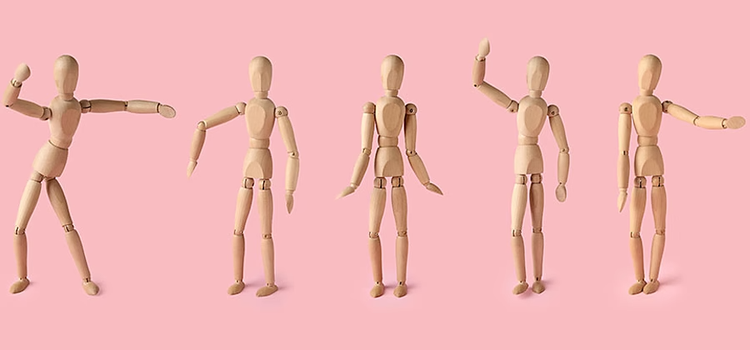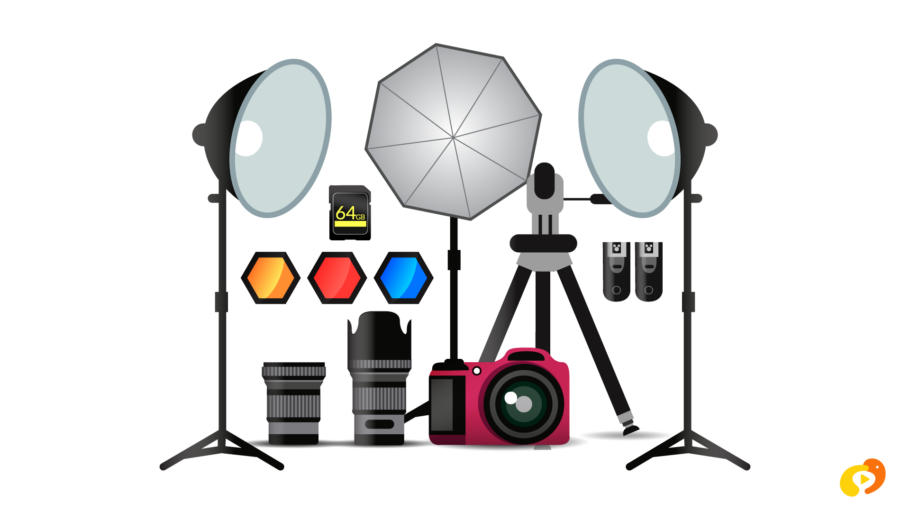Last Updated on January 3, 2025
Article Contents
How to Make Stop Motion Animation Videos
Stop motion animation is an engaging and creative way to tell a story by bringing everyday objects to life. Whether you’re using toys, clay figures, or household items, stop motion lets you craft unique animations one frame at a time. This step-by-step guide will walk you through how to make a stop motion video with pictures and even how to convert existing videos into stop motion. With the right tools, planning, and patience, you can create impressive stop motion animations that will captivate your audience. Understanding what is stop motion animation is crucial to mastering the techniques outlined in this guide for creating captivating videos.
Before we talk about How to Make Stop Motion Animation Videos, let’s start with…
Introduction to Stop Motion Animation

Stop motion animation has been used for over a century to create compelling visuals by taking a series of photographs, moving objects slightly between each shot, and playing them in sequence. This process gives the illusion of movement, making inanimate objects appear as if they’re alive.
What is Stop Motion Animation?
Stop motion animation is a technique where you physically manipulate objects and capture them frame by frame. When these frames are played together at a normal speed, they create the illusion of motion. It’s a hands-on method that has been used in iconic films like The Nightmare Before Christmas and Wallace & Gromit. If you’re new to stop motion and want a deep dive into the concept, check out our blog post on What is Stop Motion Animation.
Why Create Stop Motion Videos?
Creating stop motion videos offers a unique way to tell stories and engage with your audience. The tactile, real-world nature of stop motion gives it a special charm, making it perfect for short films, commercials, or even social media content. Plus, the process of building a scene and animating objects can be a fun and rewarding experience, whether you’re working on a personal project or something more professional.
Essential Tools and Equipment
Before you start animating, you’ll need some basic tools to get the job done. Luckily, stop motion doesn’t require expensive gear—you can even get started with a smartphone and a few everyday objects.

Camera or Smartphone
A camera is one of the most important tools for stop motion. You don’t need a professional-grade camera to get started—many animators use their smartphones. However, if you do have a DSLR or mirrorless camera, it can give you greater control over focus, aperture, and shutter speed, resulting in higher-quality images. Ensure that your camera has a way to lock the settings to maintain consistency between shots.
Tripod and Stabilization
Keeping your camera steady is essential in stop motion animation. A tripod is a must-have for ensuring your camera remains in the exact same position between frames. Even slight movements can ruin the flow of your animation, so stabilization is key. If you’re using a smartphone, consider getting a mount or stand to keep it stable.
Lighting
Consistent lighting is critical in stop motion to avoid flickering between frames. Using controlled lighting sources such as softbox lights or LED lamps ensures that your lighting stays steady throughout the shoot. Natural light can work, but it’s less predictable as it changes over time, which may lead to inconsistencies in your animation.
Editing Software
Once you’ve captured your frames, you’ll need animation or video editing software to compile them. Free options like Stop Motion Studio or OpenShot offer all the tools you need to arrange your frames, adjust the timing, and add effects. More advanced users might prefer Adobe Premiere Pro or Dragonframe for greater control over frame rates and post-production features.
How to Make a Stop Motion Video
Creating a stop motion video involves careful planning and attention to detail. Here’s a step-by-step guide to get you started:
Planning Your Stop Motion Project
Before you start taking pictures, it’s crucial to plan out your project. Create a storyboard that outlines the movement and progression of your animation. This will help you visualize the scenes and ensure smooth transitions between each shot.
Decide on the characters, props, and the setting you’ll use. Make a list of actions and how many frames you’ll need to capture for each movement. For smoother animations, aim for 12 to 24 frames per second—this means capturing more photos for fluid motion.
Setting Up the Scene
Set up your background and props in the exact position you want them to be in for the first frame. Ensure that your camera is mounted on a tripod and won’t move between shots. Arrange your lighting to avoid shadows or glare that might change during the process.
Capturing the Frames
Once your scene is set, start capturing the frames. Move your objects slightly after each shot and take another picture. Consistency is key, so make sure the movements are gradual and even. For example, if you’re animating a toy walking, move the legs in small increments to ensure a smooth walk cycle when played back.
Take your time during this process—patience will lead to a smoother final product. After capturing enough frames, it’s time to compile them in editing software.
How to Make a Stop Motion Video with Pictures
If you’re looking to create a stop motion video using existing pictures, the process is straightforward with the right editing software. Here’s how you can turn your photos into a stop motion animation:
Importing Pictures into Editing Software
Open your preferred editing software and import the sequence of pictures you’ve taken. Ensure that they are in the correct order to maintain the flow of the animation. Most software allows you to import multiple images at once and arrange them automatically in the timeline.
Adjusting Frame Rate
Once your images are in place, set the frame rate to determine how fast or slow your animation will play. Most animations work well at 24 frames per second (fps) for smooth motion, but you can adjust this depending on the style of your video. Lower frame rates (12 fps) can give a choppier, more stylized look.
Adding Effects and Sounds
After arranging your frames and setting the frame rate, you can enhance your video by adding sound effects, music, or voiceovers. Many stop motion animations benefit from quirky sound design or background music that complements the visual style. You can also use color grading or filters to give your video a polished, cohesive look.
How to Make a Video into Stop Motion
If you have an existing video that you’d like to convert into stop motion, it’s possible to do so by adjusting the playback speed and removing frames. This method can give your video a stop motion feel without the need for manual frame-by-frame photography.
Converting Existing Videos into Stop Motion
To convert an existing video into stop motion, you’ll need to import the video into editing software and reduce the frame rate. This can be done by selectively removing frames at regular intervals. For example, if your video was shot at 30 fps, removing every second frame will create a stuttered effect reminiscent of stop motion.
Enhancing the Stop Motion Effect
After reducing the frame rate, you can further enhance the stop motion effect by adding filters, such as grain or sepia tones, to mimic the aesthetic of classic stop motion films. You can also overlay sound effects or music that complements the jerky, hand-made quality of stop motion.
How to Make a Video Look Like Stop Motion
If you don’t have the time or equipment for traditional stop motion, you can still achieve a similar effect using editing techniques.
Applying Stop Motion Filters
Some video editing software offers built-in filters that replicate the look of stop motion. These filters alter the frame rate and add texture to give your video a more hand-crafted feel. Tools like Premiere Pro or DaVinci Resolve may offer preset filters that you can apply with just a few clicks.
Manual Editing Techniques
Another way to achieve the stop motion look is by manually removing frames or adjusting the timing between shots. By decreasing the frame rate or adding pauses between movements, you can simulate the stop motion aesthetic. Additionally, adjusting the color or adding a slight flicker effect can give your video a more authentic stop motion vibe.
Final Tips and Best Practices
Stop motion animation is a meticulous process, but these final tips will help you get the best results:
Maintaining Consistency
Consistency is key in stop motion animation. Keep your lighting, camera positioning, and object movements steady throughout the project. Even slight changes can disrupt the flow of your animation and reduce its quality.
Post-Production Tips
After compiling your frames, take time during post-production to refine the final animation. Adjust the timing between frames, correct any lighting inconsistencies, and add audio that enhances the action on screen. The editing process is where your animation truly comes to life, so don’t rush it.
Conclusion
Creating a stop motion video is a fun and rewarding experience that allows you to bring inanimate objects to life. Whether you’re capturing individual frames with a camera or converting an existing video, stop motion offers endless creative possibilities. By following this guide, you’ll be well on your way to mastering the art of stop motion and producing videos that captivate and entertain.
From planning your shots to choosing the right software, now you know exactly how to make a stop motion video with pictures or transform a regular video into stop motion.
![How to Make Stop Motion Animation Videos [Step-by-Step Guide]](https://mypromovideos.com/wp-content/uploads/2024/09/How-to-Make-Stop-Motion-Animation-Videos-Step-by-Step-Guide-910x512.jpg)
